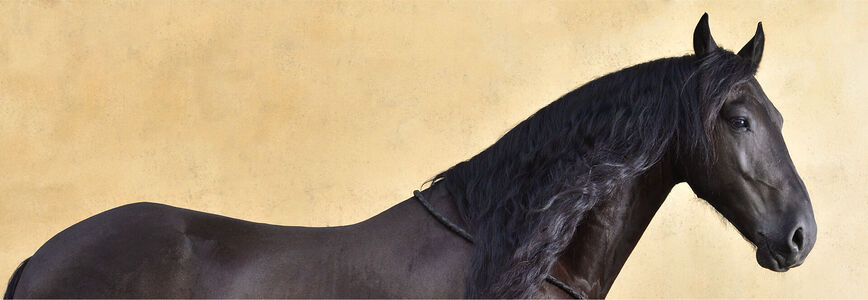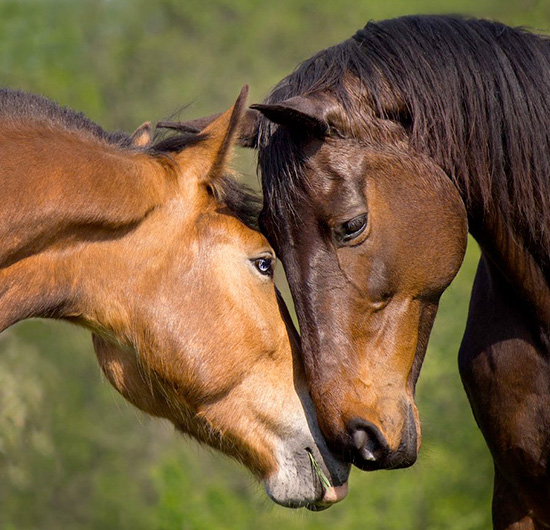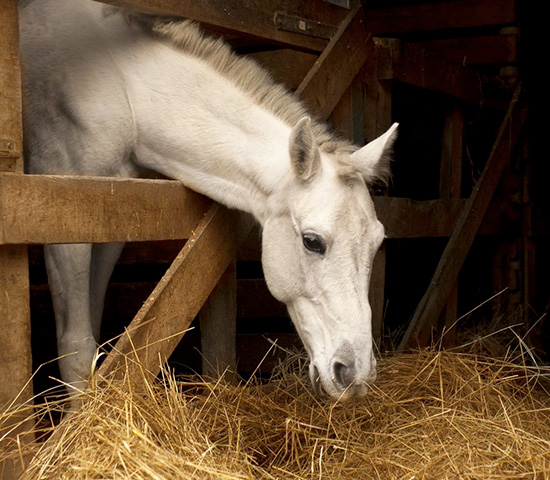
The uprightness of the neck is used by horses to express themselves with and among each other. Learn more about this here.

By raising the neck, horses can express themselves very well - for example, to announce danger or to impress other horses. A raised head with the neck stretched upwards is a sign of high attention and also caution. The horse builds itself up to its full height in order to survey a situation, which is why, for example, show jumpers also raise their head and throat in front of an obstacle - they can fixate and assess it better this way. Also, such a neck pose alerts the horse's peers to possible dangers. In addition, this posture triggers the release of adrenaline to prepare the noble quadruped for a quick escape in a situation it perceives as threatening. The pulse accelerates and the animals become more efficient for a short time. Since this neck position automatically causes the release of adrenaline, excited horses can be calmed down by gently and without pressure getting them to lower their throats again.
When impaling mares or other stallions, stallions naturally show a neck posture that is perceived as very aesthetic: They slightly raise the cervical spine and thereby arch the upper line of the entire neck, the head is carried with the nose on the vertical. The animals appear imposing and powerful in this position, which serves to intimidate an opponent or to impress mares. The head and neck position also affects the rest of the body, as the back is also arched up and the hindquarters come under the centre of gravity, i.e. the middle of the noble quadruped, with powerful kicks. This makes the respective gait look expressive and beautiful, which is why this very posture is the declared goal of the collection under the rider. Of course, care must be taken not to pull the bridge of the nose behind the vertical and not to hinder the horse as a rider in its sweeping and expansive movements.

A horse's neck is a complex structure with more than 100 muscles and seven cervical vertebrae. These seven cervical vertebrae connect to form an S-shape from the nape of the neck to the withers. The top two are shaped slightly differently from the rest and help move and support the head. The remaining five are among the longest vertebrae in the horse's body.
The typical neck of the animal is slightly vertical, which requires considerable support from the muscles. Consequently, most of the upper neck is not defined by bone, but actually by muscle. In total, the neck accounts for 6% of the body mass of a noble quadruped. A system of large, axial muscles, stabilises the whole. The cervical vertebrae are particularly strong, but at the same time flexible, which makes it easy for horses to absorb shocks. The neck of the noble quadruped also houses the trachea and oesophagus, the jugular vein, many tendons and ligaments as well as cartilage.
A stag neck is when the muscles on the underside of the neck are strong, but the muscles on the top are weak. The tendency to stag neck is congenital in some horses, in some it has been broken in - for example by constantly pulling on the reins during training. This causes the lower muscles to tense and become hard.
Horses with swan necks hardly exist any more due to breeding, but it is still a form of the horse's neck in which the highest point is the second or third cervical vertebra. Because they often twist the throat sideways, it is difficult to ride the horses through the neck.
Bacon necks are short and strong with extra fat on the mane crest. The muscles in the upper part of the neck are very pronounced. Furthermore, the throat is very thick.